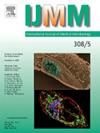From crisis to routine – Standardization of SARS-CoV-2 genome detection by enhanced EQA schemes in a scientific pandemic network
IF 3.6
3区 医学
Q1 MICROBIOLOGY
引用次数: 0
Abstract
In the beginning of 2020, the outbreak of the COVID-19 pandemic led to a crisis in which diagnostic methods for the genome detection of SARS-CoV-2 were urgently needed. Based on the very early publication of the basic principles for a diagnostic test for the genome detection of SARS-CoV-2, the first noncommercial laboratory-developed tests (LDTs) and commercial tests were introduced. As there was considerable uncertainty about the reliability and performance of different tests and different laboratories, INSTAND established external quality assessment (EQA) schemes for the detection of SARS-CoV-2 starting in April 2020. In close partnership in a scientific network, the EQA schemes were enhanced, especially the April, June and November 2020 terms. The enhancement included: (i) immediate provision of suitable virus including variants of concern at the beginning of the pandemic outbreak, (ii) short frequency of EQA schemes, (iii) concentration dependency of the testing and sensitivity check, achieved by using SARS-CoV-2-positive samples from a 10-fold dilution series of the same starting material, (iv) specificity check of the testing, achieved by using SARS-CoV-2-negative samples containing human coronaviruses or MERS CoV, (v) revealed samples for orientation on test performance during an ongoing or at the start of an EQA scheme using a pre-quantified SARS-CoV-2-positive EQA sample with a low viral RNA load of only 1 570 copies/mL assigned by digital PCR (dPCR) in June 2020 and (vi) quantified reference materials based on the experiences of the first two EQA schemes with dPCR-assigned values in copies/mL beginning in November 2020 for self-evaluation of the applied test system. This manuscript summarizes the results of a total of 13 EQA schemes for the detection of SARS-CoV-2 between April 2020 and June 2023 in which a total of 1 413 laboratories from 49 countries participated. The qualitative results for the detection of SARS-CoV-2-positive samples were between 95.8 % and 99.7 % correct positive, excluding extremely low concentration samples. For all SARS-CoV-2-negative EQA samples, the qualitative success rates ranged from 95.1 % to 99.4 % correct negative results. The widely varying values for the cycle threshold (Ct)/crossing point (Cq) reported for the different target genes and test systems were striking. A few laboratories reported quantitative results in copies/mL for several VOCs with an acceptable rate of over 93 % correct positive results in the majority of cases. The description of the enhanced EQA schemes for SARS-CoV-2 detection in terms of timing and scope can serve as a blueprint for the rapid development of a quality assessment of diagnostics for an emerging pathogen.
从危机到常规——在科学大流行网络中增强EQA方案对SARS-CoV-2基因组检测的标准化
2020年初,COVID-19大流行的爆发引发了一场危机,迫切需要SARS-CoV-2基因组检测的诊断方法。基于很早就公布的SARS-CoV-2基因组检测诊断检测基本原则,推出了首批非商业性实验室开发的检测方法和商业性检测方法。由于不同检测方法和不同实验室的可靠性和性能存在相当大的不确定性,科学技术研究所从2020年4月开始建立了检测新冠病毒的外部质量评估(EQA)方案。在科学网络的密切合作下,EQA计划得到了加强,特别是2020年4月、6月和11月的期限。改进包括:(i)在大流行爆发之初立即提供合适的病毒,包括引起关注的变体;(ii)缩短EQA方案的频率;(iii)检测的浓度依赖性和敏感性检查,通过使用相同起始材料的10倍稀释系列的sars -CoV-2阳性样本实现;(iv)检测的特异性检查,通过使用含有人类冠状病毒或中东呼吸综合征冠状病毒的sars -CoV-2阴性样本实现。(v)使用预定量的sars - cov -2阳性EQA样品,在2020年6月通过数字PCR (dPCR)分配的病毒RNA载量低,仅为1 570拷贝/mL,在正在进行的EQA计划期间或开始时提供样品,以便对测试性能进行定位;(vi)根据前两个EQA计划的经验,从2020年11月开始使用dPCR分配的拷贝/mL值,对所应用的测试系统进行自我评估。本文总结了2020年4月至2023年6月期间,共有49个国家的1 413个实验室参与的13项SARS-CoV-2检测EQA计划的结果。除极低浓度样品外,sars - cov -2阳性样品的正确率在95.8% % ~ 99.7% %之间。对于所有sars - cov -2阴性EQA样本,正确率为95.1% %至99.4% %。不同靶基因和检测系统的循环阈值(Ct)/交叉点(Cq)差异很大,这是惊人的。一些实验室报告了几种挥发性有机化合物的数量结果,在大多数情况下,可接受的正确率超过93% %。从时间和范围方面描述了加强的SARS-CoV-2检测EQA方案,可作为快速制定新发病原体诊断质量评估的蓝图。
本文章由计算机程序翻译,如有差异,请以英文原文为准。
求助全文
约1分钟内获得全文
求助全文
来源期刊
CiteScore
9.70
自引率
0.00%
发文量
18
审稿时长
45 days
期刊介绍:
Pathogen genome sequencing projects have provided a wealth of data that need to be set in context to pathogenicity and the outcome of infections. In addition, the interplay between a pathogen and its host cell has become increasingly important to understand and interfere with diseases caused by microbial pathogens. IJMM meets these needs by focussing on genome and proteome analyses, studies dealing with the molecular mechanisms of pathogenicity and the evolution of pathogenic agents, the interactions between pathogens and host cells ("cellular microbiology"), and molecular epidemiology. To help the reader keeping up with the rapidly evolving new findings in the field of medical microbiology, IJMM publishes original articles, case studies and topical, state-of-the-art mini-reviews in a well balanced fashion. All articles are strictly peer-reviewed. Important topics are reinforced by 2 special issues per year dedicated to a particular theme. Finally, at irregular intervals, current opinions on recent or future developments in medical microbiology are presented in an editorial section.

 求助内容:
求助内容: 应助结果提醒方式:
应助结果提醒方式:


